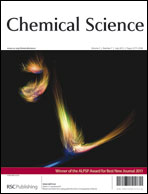The understanding of the relationship between plasmonic and surface-enhanced Raman scattering (SERS) properties of dynamic nanoparticle assemblies is of paramount importance for the optimal design of related plasmonic nanostructures, especially for SERS applications. In this regard, recent studies have provided new important insights for well-ordered nanoparticle assemblies but little is known about the relationship between the physical and optical properties for large ensembles of randomly aggregated metal nanoparticles in suspension, which still represents the simplest and most common route to obtain highly effective SERS substrates. Here we exploit the triplex-assembling ability of DNA-conjugated silver nanoparticles to engineer interparticle junctions with controlled interparticle distance and tune the aggregation rate to allow accurate investigation into the correlation between the averaged time-dependent plasmonic and SERS responses within a complex ensemble of nanoparticles in suspension. Solution-based single particle tracking was used to characterize the heterogeneity of the nanoparticle assembly with statistical reliability, acting as a key tool to unravel the connection between these two bulk responses. To achieve this, we report the first example of the parallel hybridization of dye-labeled locked nucleic acid (LNA) silver nanoparticle probes to double stranded DNA bridges of different lengths to form a triplex assembly, that provides SERS enhancements directly related to the interparticle distance imposed by the high structural rigidity of the double stranded linker. This is also a crucial step towards utilising SERS for the study of DNA in its natural double stranded state and, ultimately, to obtain nanoscale distance-dependent information in challenging biological environments using specially designed nanoparticles.

You have access to this article
 Please wait while we load your content...
Something went wrong. Try again?
Please wait while we load your content...
Something went wrong. Try again?


 Please wait while we load your content...
Please wait while we load your content...